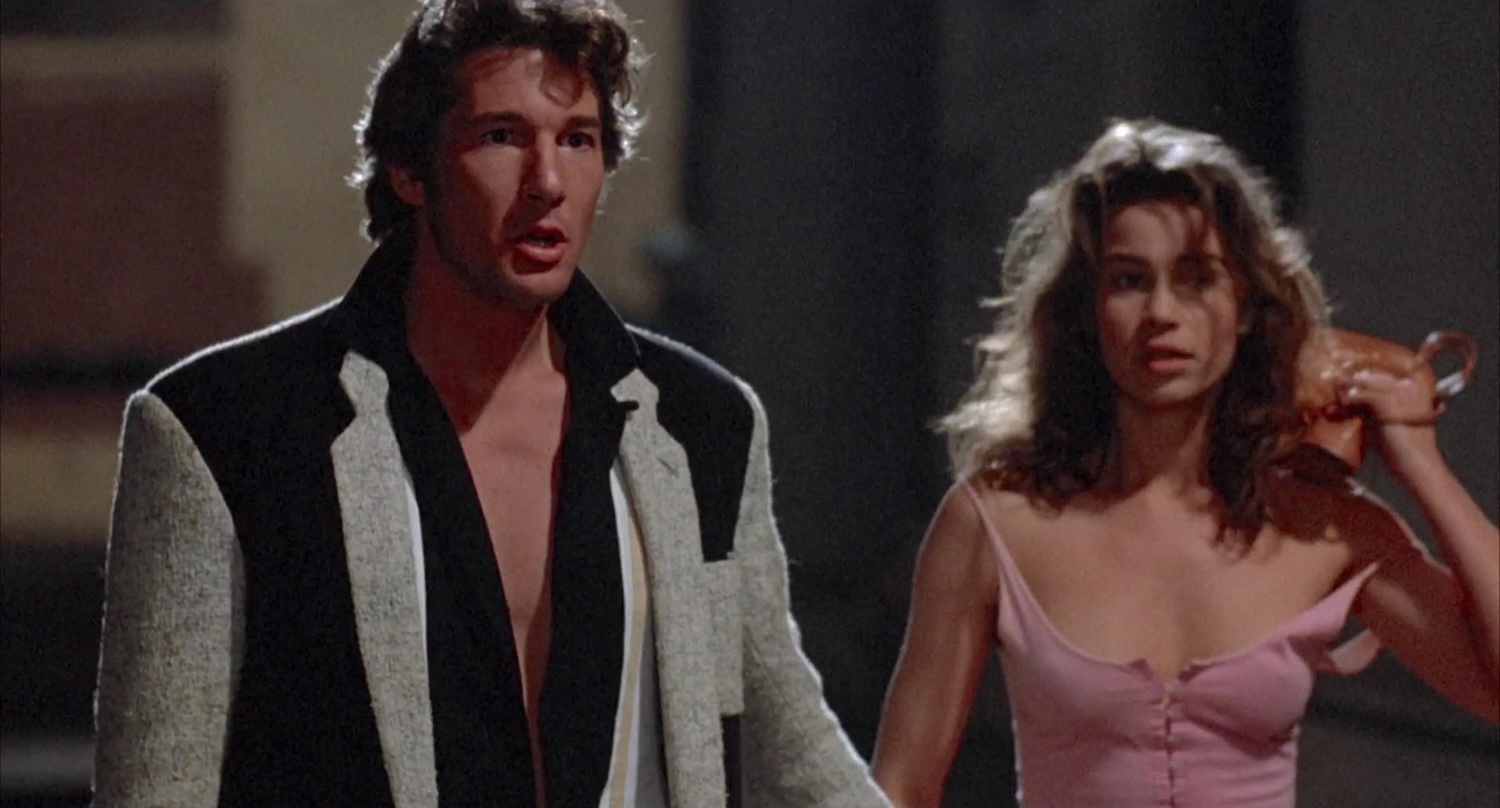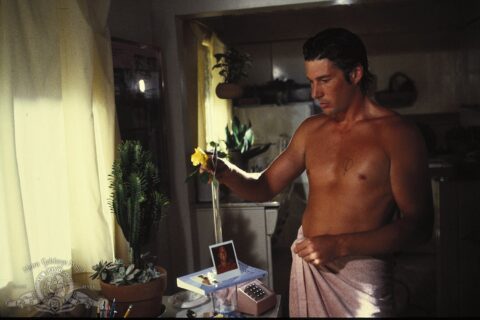There were few actors as handsome, or as commanding, as Richard Gere in the 1980s. No matter the film, no matter the material, his intensity, poise and sensuality filled the screen with a powerful presence. Impossible to look away.
Take Breathless (Jim McBride, 1983), a bizarre Hollywood remake of Godard’s 1960 classic, where instead of merely imitating Jean-Paul Belmondo’s Michel — his obsession with Humphrey Bogart, guns, America — he creates a far stranger man; the impulsive, sex-obsessed, increasingly goofy Jesse Lusack, deeply infatuated with the Silver Surfer, Jerry Lee Lewis and French exchange student Monica Poiccard (Valérie Kaprisky).
It works so well because Jim McBride and Gere, the latter fresh off An Officer and a Gentleman (Taylor Hackford, 1982), don’t treat the material as a holy thing to be politely reinterpreted or merely revered, but as an anything-goes template for cinematic silliness and carnage. Godard may have reinvented the rulebook with his use of jumpcuts, that astounding long middle scene, his disregard for so-called cinematic convention, but McBride doesn’t bow down to cinema’s biggest auteur; instead, he finds his own way of bringing a slice of American cool to the world’s chicest film. By not really respecting the original, he pays the ultimate tribute to Godard’s punk spirit.
It begins in Las Vegas, with Lusack bumping a car outside a club and ditching his latest girlfriend. Then he drives through the desert, the sky above him a deliberately artificial red, as he listens to Jerry Lee Lewis on the radio. Then, as in Godard’s film, he gets into an altercation with a police officer, and blasts him away; it is unsure whether the killing is intentional. It doesn’t really matter. It happened, and Lusack is on the run in Los Angeles.
So we have the gun. Now we need the girl.
She’s Monica, played by French actress Kaprisky in her first American role.1She’d previously starred in Robert Fuest’s erotic drama Aphrodite (1982), where she appears topless even on the poster! Ebert wasn’t a fan of her casting, saying that she is “an unknown in a role too large and complex… there are times when she seems lost in a scene, looking to Gere for guidance.” But, when the film does slow down and they have their long, sensual, full-frontal moment together — making love innumerable times, quoting Faulkner, falling in and out of each other’s favours — I felt that this hesitation reflected the character rather well; a young exchange student who is helpless before the charms of a crazy older man. It helps that the camerawork is fluid and dynamic, both actors are beautiful and the scenes have a real lightness to them — as well as a potent erotic charge.2This is later complemented by an insanely beautiful, kinetic moment where they break into a cinema, and make love behind the projection of Gun Crazy (Joseph H. Lewis, 1950); just one of many this is kino moments throughout this colourful, fascinating movie.

For a long time, when I watched Pulp Fiction (Quentin Tarantino, 1994), I assumed that the Butch and Fabienne scenes, especially that long stretch in the motel room, were directly inspired by Godard’s film. Yet, it’s obvious here that Tarantino wasn’t ripping off the Franco-Swiss auteur, but rather Jim McBride’s version instead. The director himself loved the film, saying: “Here’s a movie that indulges completely all my obsessions – comic books, rockabilly music and movies.” With Breathless (1983), one can see that crucial bridge between Godard’s style and Tarantino’s quintessentially American mode of genre postmodernism.
Talking of post-modernism — the combination of various bits of pop culture ephemera into its own cohesive playful thing — I was re-playing a bit of Grand Theft Auto: Vice City (2002) the other day, the major appeal of which, is the ability to pluck any car you want directly off the street and drive it wherever you want — until, inevitably, the car gets completely wrecked. The running gag of Breathless seems to presage GTA in many ways, with Lusack continuously turning up in different classic cars, before having to ditch them when they are trashed, the police corner him, or after a bad sale.
And of course, both San Andreas (2004) and GTA V (2013) have their own versions of Venice Beach, Verona Beach and Vespucci Beach respectively. It is here that Lusack finds himself chased by the long arm of the law, trying to save his girl in the process.
The Venice Beach sequences are some of the film’s best photographed moments; flowing, long-distance takes contrast Lusack and Poiccard against the large-scale murals, rendering them comic book characters and bringing his Silver Surfer obsession to life. It’s up there with Mixed Nuts (Nora Ephron, 1994), Nowhere (Gregg Araki, 1997), Barbie (Greta Gerwig, 2023) and White Men Can’t Jump (Ron Shelton, 1992) in its use of the district, showing how Venice Beach is one of the greatest outdoor film sets in the world.
But Lusack doesn’t want to stay in Los Angeles for long. Naturally, like in so many great American fantasies, he wants to get across to the Mexican border.3Gere has this weird way of saying Mexico over and over again in a bad accent, which should be sort of offensive, but it comes across as kinda stupid and endearing. But we know that Mexico is never going to happen; Lusack is betrayed by his scared French girlfriend. It’s here that a newfound seriousness emerges; with Gere losing his goofiness and selling the betrayal with powerful ease. This kind of switch in tone is something only the very best actors can do. Gere is among them. Lusack is condemned to die.
The film originally had the exact same ending as the original, with Lusack blown to pieces by the cops. But test audiences hated it, so we get more of a Hollywood ending instead; a silly freeze-frame of Richard Gere about to be annihilated by the LAPD accompanied to X’s cover of Jerry Lee Lewis’ “Breathless.” It’s pretty stupid — nearly rivalling that handclasp at the end of Tango & Cash (Andrei Konchalovsky, Albert Magnoli, Peter MacDonald, 1989) — but also kind of fitting. An American-style cop out that provides the final touching insult on Godard’s precious original.
Watched, as always, on Tubi.

Redmond is the editor-in-chief of Journey Into Cinema.
